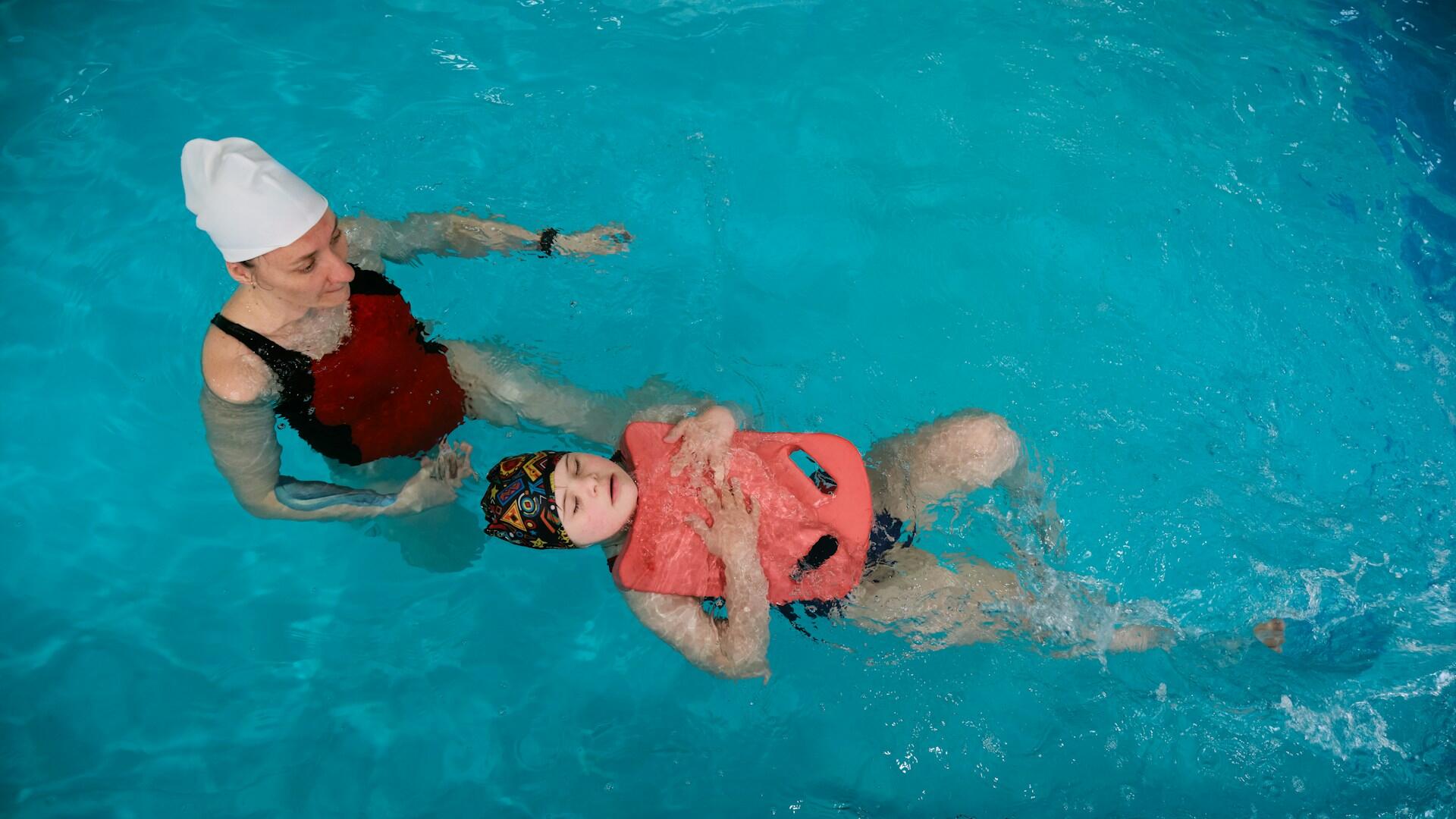Whether at a lake, pool, or the coast, water magically attracts people of all ages. Swimming, splashing around, or simply dipping your feet in the water are some of the most enjoyable summer activities. But as refreshing and soothing as water is, it also poses risks. Every year, there are numerous swimming accidents, many with serious consequences. The causes are often the same – lack of knowledge of swimming rules, carelessness, or misjudgment.
Precisely because water seems so natural in everyday life, its dangers are often underestimated. Knowledge of swimming rules and safe behavior in and around water is therefore not only relevant for children, but for people of all ages.
In our quiz, you can test your knowledge of water safety and, if necessary, refresh your knowledge before taking your next dip in the cool water.
Quiz
Quiz :
What Are Swimming Rules and Who Sets Them?
Swimming rules are recommendations and guidelines for behavior that serve to prevent swimming accidents and enable safe swimming. In the US, these rules are issued by organizations such as the Red Cross, the Water Rescue Service, and local authorities.
The rules cover various areas:
- Before swimming: e.g., check your health, do not swim on a full stomach or under the influence of alcohol.
- While swimming: be considerate of others, behave safely in currents, observe barriers and flags.
- Dealing with emergencies: what to do if someone is in danger.
These rules are based on many years of experience in rescue services and are not bureaucratic red tape – they protect and save lives. It is therefore a good idea to familiarize yourself regularly with the most important swimming rules. Below you will find an overview of the key recommendations as formulated by the DLRG, for example:
🌡️ Only swim if you feel well
Only go into the water if you are healthy – not overheated, exhausted, or hypothermic.
🍽️ Do not enter the water on an empty or full stomach
Digestive or circulatory problems can be dangerous in the water.
🍻 No alcohol before swimming
Alcohol impairs your perception and reaction time!
👀 Never go into the water alone – and tell someone
Especially in open water: always be accompanied and supervised if necessary.
🏊♂️ Non-swimmers should stay in shallow water
Only go into the water up to your hips – and use swimming aids with caution: they do not provide reliable protection against drowning.
🚫🏖️ Only swim where it is permitted and safe
Pay attention to warning signs and barriers and avoid unfamiliar or unclear waters.
💨 Be aware of currents, wind, and water depth
Natural bodies of water change – never underestimate currents or temperature differences below the surface.
⚡ Get out of the water immediately in thunderstorms or heavy rain
Water conducts electricity – even distant lightning strikes can be fatal.
🗣️ In case of danger: call for help, wave – and think before you act
Get help, shout loudly, and wave. If you want to help yourself, make sure you are safe.
🤝 Be considerate of others – no pushing, shoving, or diving under others
Fun stops when others are endangered – avoid risky dares.
Water safety rules are not just theory for school lessons, but practical aids for everyday life. Many of the recommendations are easy to implement – and can make all the difference in an emergency. Children in particular learn to be mindful and responsible in their environment by practicing such rules from an early age.
It is also worthwhile for adults to regularly think about their own behavior around water. Experience shows that those who know the swimming rules and take them seriously are not only better protected themselves, but can also help others safely in an emergency – and thus actively contribute to the safety of everyone.
Risk Factors and Typical Dangers In and Around Water
Water is life-giving, relaxing, and fun—but it also has an unpredictable side. Many people underestimate the risks that can arise even in seemingly harmless conditions. The danger often depends not only on the water itself, but also on your physical condition, experience, and judgment.
Who Is Particularly at Risk When Swimming?
Children
Young Adults
Middle-aged Men
Statistics show that children and young adults are particularly prone to swimming accidents – often because they are unable to assess dangers properly or overestimate their abilities. But adults are not risk-free either. According to statistics, middle-aged men are also considered to be at above-average risk, often in connection with alcohol, recklessness or exhaustion. Older people, non-swimmers, and people with health restrictions are also among the risk groups.
There is also an increased risk for all swimmers in open waters such as lakes, rivers, or the ocean. These pose completely different challenges than swimming pools. Currents, changing depths, or murky water make orientation difficult and increase the risk of accidents.
Typical Hazards Around Water
Safe behavior around water begins with recognizing typical hazards. These include:

Underestimated currents: Rivers and bays can have treacherous currents that can sweep even experienced swimmers away.
Temperature shocks: Jumping into cold water can overwhelm the circulatory system and, in the worst case, lead to cardiac arrest if you are overheated beforehand.
Overestimating your own abilities: Even experienced swimmers can get into trouble due to exhaustion or muscle cramps.
Alcohol: Alcohol impairs judgment, coordination, and reaction time—in water, this can be fatal.
Lack of supervision: Constant adult supervision is essential, especially for children—even in shallow water.

These dangers are so dangerous because they are often underestimated or recognized too late. Staying safe in and around water therefore begins with attentiveness, a realistic self-assessment, and knowledge of potential risks. Those who are well prepared and act cautiously not only protect themselves, but also take responsibility for others.
Prevention Begins with Knowledge
Swimming rules not only help to prevent accidents, but also promote respectful and responsible behavior around water. Those who are informed and act consciously protect themselves and others. Even small decisions—such as taking a break after eating or avoiding diving into unfamiliar waters—can make a difference.
First aid skills, knowledge of rescue equipment, and knowing how to behave in an emergency are also part of comprehensive water safety skills.
Our water safety quiz is not a test, but a tool for self-assessment: Which swimming rules are you familiar with? Where might you still be unsure? Twelve practical questions will help you test and refresh your knowledge. The explanations for each correct answer will help you understand and retain what you have learned.
Join in – because safety in the water is not a matter of chance. It starts with awareness, consideration, and the right knowledge.















